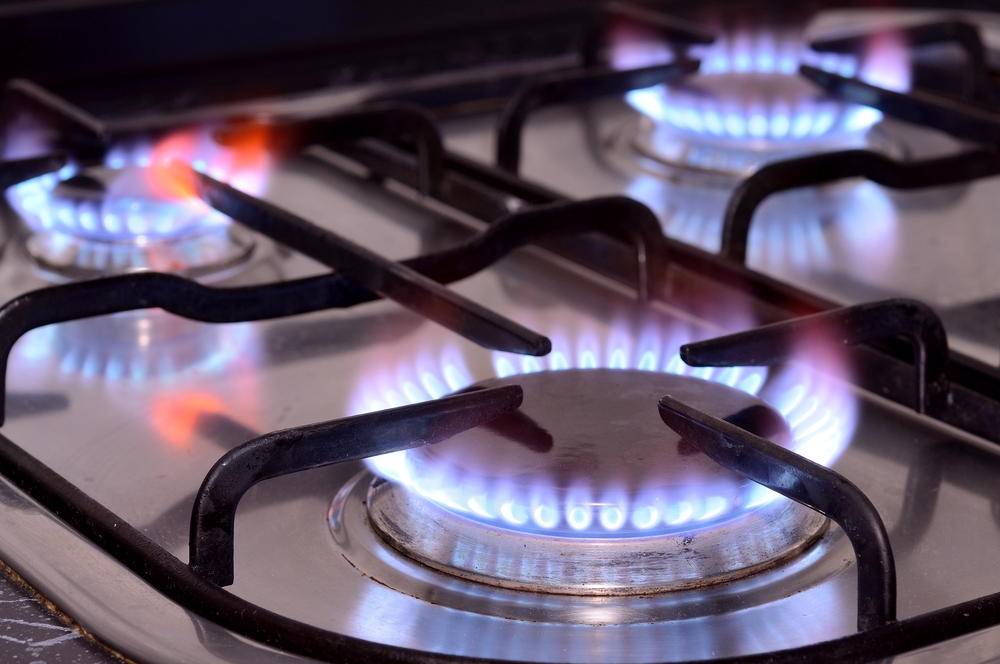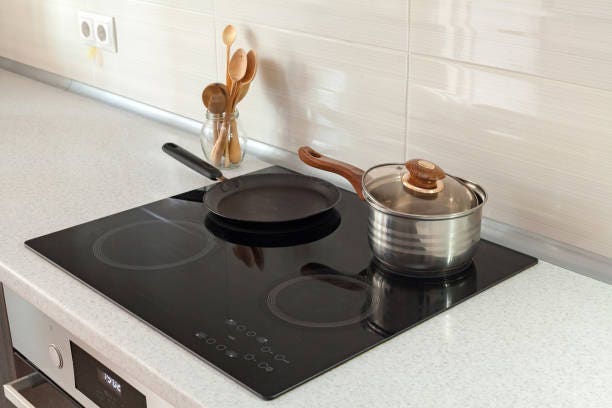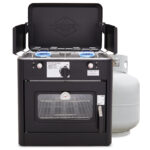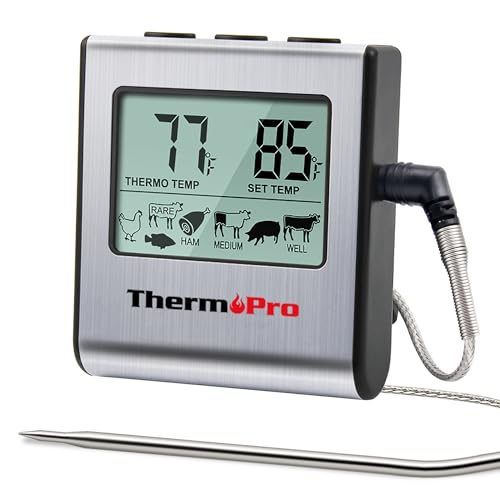As an Amazon Associate, I earn from qualifying purchases
Gas stoves generally have lower monthly costs compared to electric stoves. The decision depends on your cooking needs and energy prices.
Choosing between a gas and electric stove for your kitchen involves evaluating both costs and cooking preferences. Gas stoves typically offer better temperature control and faster heating, making them popular among serious cooks. Electric stoves, on the other hand, are easier to clean and install.
Monthly operational costs for gas stoves are usually lower due to cheaper natural gas prices. Electric stoves may have higher energy costs depending on your local utility rates. Understanding these factors can help you make an informed decision that balances cost and cooking efficiency.
Initial Purchase Price
Choosing between a gas and electric stove involves many factors. One crucial aspect is the initial purchase price. This section breaks down the costs of each option to help you make an informed decision.
Gas Stove Costs
The initial cost of a gas stove can vary. Typically, gas stoves range from $300 to $1,500. High-end models can go up to $3,000 or more. Several factors can influence the price:
- Brand – Well-known brands usually cost more.
- Features – Extra features, like self-cleaning, add to the cost.
- Size – Larger stoves are generally more expensive.
Another cost to consider is the installation. If your kitchen lacks a gas line, installation can add $100 to $200 to the initial cost.
Electric Stove Costs
Electric stoves also come in a range of prices. Basic models start at around $200 and can go up to $2,000 for high-end versions. Here are some factors affecting the price:
- Brand – Premium brands usually come with a higher price tag.
- Features – Features like double ovens add to the cost.
- Type – Induction stoves are generally more expensive than coil or smooth-top models.
Installation for an electric stove is usually simpler and cheaper. It can range from $50 to $100, especially if a suitable outlet is already in place.
| Stove Type | Price Range | Installation Cost |
|---|---|---|
| Gas Stove | $300 – $3,000 | $100 – $200 |
| Electric Stove | $200 – $2,000 | $50 – $100 |
Installation Expenses
When choosing between a gas stove and an electric stove, understanding the installation expenses is crucial. These costs can greatly impact your overall budget. Below, we break down the expenses associated with both options.
Setting Up A Gas Stove
Installing a gas stove requires more work and can be costly. You’ll need a professional to handle the setup. Here are the main expenses:
- Gas Line Installation: A new gas line might be needed. This can cost between $200 and $500.
- Professional Labor: Expect to pay around $150 to $300 for installation.
- Permits: Some areas require permits, adding another $50 to $100.
If your home already has a gas line, costs will be lower. If not, expect to pay more.
Installing An Electric Stove
Electric stoves usually cost less to install. They often require a simple plug-in setup. Here are the primary costs:
- Outlet Installation: A 240-volt outlet is necessary. This can cost between $100 and $200.
- Professional Labor: Hiring an electrician might cost around $100 to $200.
Most homes already have the needed outlet. If not, installation is still cheaper than gas.
In summary, gas stoves have higher installation costs. Electric stoves are generally more budget-friendly for setup.
Energy Consumption
When choosing between a gas stove and an electric stove, understanding energy consumption is crucial. Both options have their pros and cons in terms of energy efficiency and cost. Let’s dive into the details to help you make an informed decision.
Gas Consumption Rates
Gas stoves use natural gas or propane as fuel. The amount of gas consumed depends on the BTU (British Thermal Unit) rating of the stove. Higher BTU ratings mean more gas usage.
On average, a gas stove uses around 40 cubic feet of natural gas per month. With natural gas prices averaging $1.50 per cubic foot, the monthly cost is approximately $60.
For propane, the cost is slightly higher. A gallon of propane costs around $2.50. A gas stove using propane consumes about 5 gallons per month, leading to a monthly cost of $12.50.
| Type of Gas | Monthly Usage | Cost per Unit | Monthly Cost |
|---|---|---|---|
| Natural Gas | 40 cubic feet | $1.50 per cubic foot | $60 |
| Propane | 5 gallons | $2.50 per gallon | $12.50 |
Electricity Usage
Electric stoves use electricity to generate heat. The amount of electricity consumed depends on the wattage of the stove. Most electric stoves have a wattage between 1000 to 3000 watts.
Assuming you use your electric stove for 2 hours daily, and the stove operates at 2000 watts:
- Daily Usage: 2 hours x 2000 watts = 4000 watt-hours (4 kWh)
- Monthly Usage: 4 kWh x 30 days = 120 kWh
With electricity prices averaging $0.13 per kWh, the monthly cost is around $15.60.
| Wattage | Daily Usage | Monthly Usage | Cost per kWh | Monthly Cost |
|---|---|---|---|---|
| 2000 watts | 4 kWh | 120 kWh | $0.13 | $15.60 |
Understanding energy consumption helps you decide the best stove for your kitchen. Both gas and electric stoves have their unique energy costs and benefits.
Monthly Utility Bills
Understanding monthly utility bills is crucial for budgeting. Your choice between a gas or electric stove impacts these costs. Let’s break down the expenses for each type.
Gas Bill Breakdown
Gas stoves use natural gas or propane. The cost of gas can vary by region. Here’s a breakdown of typical monthly costs:
- Average cost per therm: $1.50
- Average monthly usage: 5 therms
- Estimated monthly cost: $7.50
Gas stoves usually have lower operational costs. They heat up quickly and cool down faster.
Electric Bill Analysis
Electric stoves use electricity, which can be pricier. Here’s a breakdown of typical monthly costs:
- Average cost per kWh: $0.13
- Average monthly usage: 50 kWh
- Estimated monthly cost: $6.50
Electric stoves have a stable temperature control. They are also easier to clean.
Understanding these costs helps decide the best stove for your kitchen. Analyzing your monthly utility bills can save you money in the long run.
Maintenance Costs
Choosing between a gas stove and an electric stove can impact your kitchen’s maintenance costs. Both types have their unique upkeep requirements, which can affect your budget over time. Understanding these costs will help you make an informed decision.
Gas Stove Maintenance
Gas stoves require regular maintenance to ensure safety and efficiency. Here are the key aspects:
- Cleaning: Gas stoves need frequent cleaning to remove food spills and grease. This prevents clogs in the burners.
- Burner Inspection: Burners should be checked regularly for blockages. Clogged burners can cause uneven heating or no flame at all.
- Gas Line Checks: It’s vital to inspect gas lines periodically. Leaks can be dangerous and may need professional repair.
- Ignition Issues: The ignition system may wear out over time. Replacing spark modules can be an added cost.
Annual maintenance costs for gas stoves can range from $50 to $150. Costs can increase with older models or more extensive repairs.
Electric Stove Upkeep
Electric stoves generally require less maintenance than gas stoves. Key maintenance tasks include:
- Surface Cleaning: Regularly clean the stovetop to remove food residues and prevent stains.
- Element Inspection: Check the heating elements for wear and tear. Replace if they show signs of damage.
- Control Panel Maintenance: Ensure the control knobs and buttons function correctly. Faulty controls might need professional attention.
- Oven Cleaning: Keep the oven interior clean to maintain efficient heating. Use the self-cleaning feature if available.
Annual maintenance costs for electric stoves are usually between $30 and $100. Electric stoves tend to have fewer parts that can fail, leading to lower upkeep expenses.
| Maintenance Task | Gas Stove | Electric Stove |
|---|---|---|
| Cleaning | Frequent | Regular |
| Burner/Element Inspection | Regular | Occasional |
| Gas Line/Control Panel Checks | Periodic | Periodic |
| Ignition/System Repair | Sometimes | Rarely |

Credit: www.electricrate.com
Longevity And Durability
Choosing between a gas and an electric stove involves many factors. One critical aspect is longevity and durability. Understanding how long each type lasts and how well it withstands wear and tear can help you make an informed decision. This section explores the lifespan and durability of both gas and electric stoves.
Lifespan Of Gas Stoves
Gas stoves typically have a long lifespan. Most gas stoves can last up to 15 years or more with proper maintenance. Regular cleaning and timely repairs can extend their life further. Gas stoves have fewer electrical components, reducing the risk of malfunction. Their simple design makes them easier to repair, adding to their longevity.
Durability Of Electric Stoves
Electric stoves also offer durability but differ in certain aspects. They generally last around 13 to 15 years. While electric stoves have more electronic components, they are less prone to rust and corrosion. Regular cleaning and care can keep them in good shape for many years.
| Type of Stove | Average Lifespan | Key Maintenance Tips |
|---|---|---|
| Gas Stove | 15 years |
|
| Electric Stove | 13-15 years |
|
Both gas and electric stoves offer longevity and durability. Each has unique maintenance needs. Choose based on your cooking habits and maintenance comfort level.
Cooking Efficiency
Cooking efficiency is a critical factor in choosing between a gas and electric stove. It impacts both time and energy consumption. This section delves into two key aspects: heat control in gas stoves and precision in electric stoves.
Heat Control In Gas Stoves
Gas stoves provide instant heat. This gives you immediate control over cooking temperatures. Adjusting the flame is quick and responsive.
- Open flame allows for better heat distribution.
- Ideal for cooking methods requiring high heat, like searing and stir-frying.
- Visual flame helps in gauging heat levels more accurately.
Gas stoves are known for their reliability. They work even during power outages. This makes them a dependable choice for many households.
Precision In Electric Stoves
Electric stoves offer precise temperature settings. This is beneficial for recipes requiring specific temperatures.
- Electric stoves maintain consistent heat levels.
- Better suited for baking and slow-cooking dishes.
- No open flame reduces the risk of burns.
Electric stoves are easier to clean. The flat surface is convenient for wiping spills. This adds to their appeal for many home cooks.
| Feature | Gas Stoves | Electric Stoves |
|---|---|---|
| Heat Control | Immediate and adjustable | Precise and consistent |
| Energy Efficiency | Varies with flame size | Energy-efficient in maintaining heat |
| Safety | Open flame, risk of burns | Flat surface, lower burn risk |
Choosing between a gas and electric stove depends on your cooking needs. Consider these factors to make an informed decision.
Safety Considerations
Choosing between a gas and electric stove involves safety. Each type has its own risks and benefits. Knowing these helps you decide what’s best for your kitchen.
Gas Stove Safety
A gas stove uses an open flame. This can be dangerous if not used properly. Here are some key safety tips:
- Install a carbon monoxide detector in your kitchen.
- Always check for gas leaks. A strong smell of gas means trouble.
- Keep flammable items away from the stove.
- Ensure proper ventilation in the kitchen.
- Never leave a gas stove unattended while cooking.
Gas stoves can cause burns and fires. Always supervise children around the stove. These simple steps will help keep you safe.
Electric Stove Safety
An electric stove doesn’t have an open flame. This reduces the risk of fire. Yet, it has its own set of safety concerns:
- Inspect the electrical cord for damage. Replace it if needed.
- Keep the stove clean. Grease can cause fires.
- Use cookware with flat bottoms for even heating.
- Unplug the stove when not in use.
- Teach kids not to touch the hot burners.
Electric stoves can overheat and cause burns. Always monitor your cooking to avoid accidents. Following these tips will help ensure your kitchen stays safe.
Environmental Impact
The environmental impact of your stove choice can influence your decision. Understanding the differences between gas and electric stoves helps you make an informed choice.
Gas Emissions
Gas stoves emit carbon dioxide when burning natural gas or propane. This contributes to greenhouse gases in the atmosphere. Gas stoves also produce methane, a potent greenhouse gas. Methane leaks during gas extraction and transportation. This makes gas stoves less environmentally friendly.
Indoor air quality can also suffer. Gas stoves release nitrogen dioxide and carbon monoxide. These pollutants can affect your health. Proper ventilation reduces these risks.
Electricity Source Impact
Electric stoves do not produce emissions during use. But, the impact depends on the source of electricity. If the electricity comes from coal or natural gas, the environmental footprint remains high. Renewable energy sources like wind, solar, and hydro reduce this impact.
Switching to an electric stove can be greener if your electricity is from renewable sources. This makes electric stoves a better choice for the environment.
Here’s a quick comparison:
| Factor | Gas Stove | Electric Stove |
|---|---|---|
| Emissions | High (CO2, methane) | Low (depends on electricity source) |
| Indoor Air Quality | Can be poor (NO2, CO) | Better (no direct emissions) |
| Renewable Energy Potential | Low | High |

Credit: www.angi.com
User Experience
Choosing between a gas and an electric stove involves considering the user experience. Both types offer unique benefits, but they also have distinct differences. This section will explore the ease of use and cleaning and maintenance aspects of both gas and electric stoves.
Ease Of Use
Gas stoves provide instant heat, making temperature control easy. Users can quickly adjust the flame to their desired level. Cooking on a gas stove feels natural and intuitive. The visual cue of the flame helps users gauge heat levels.
Electric stoves, especially those with smooth tops, are often easier for beginners. They offer even heating and a consistent cooking surface. Modern electric stoves come with advanced features like timers and safety locks. These features enhance the cooking experience.
Cleaning And Maintenance
Cleaning a gas stove involves removing grates and burner caps. These parts need regular scrubbing to remove food residue. Gas stoves have more nooks and crannies, which can trap dirt and grease.
Electric stoves, particularly smooth tops, are easier to clean. A simple wipe with a damp cloth usually suffices. There are no grates or burners to disassemble. This makes electric stoves more convenient for quick cleaning.
| Aspect | Gas Stove | Electric Stove |
|---|---|---|
| Ease of Use | Instant heat, easy flame adjustment | Even heating, advanced features |
| Cleaning | Requires more effort, multiple parts | Quick wipe, smooth surface |
Choosing the right stove depends on your cooking style and priorities. Both gas and electric stoves have unique advantages.
Versatility In Cooking
Choosing between a gas stove and an electric stove can be tricky. One key factor to consider is the versatility in cooking. Different stoves offer different cooking experiences and options.
Types Of Cooking On Gas Stoves
Gas stoves are popular for their quick heating and precise control. You can easily adjust the flame size. This makes gas stoves ideal for various cooking techniques.
- Sautéing: Gas stoves allow quick adjustments for perfect sautéing.
- Boiling: Water boils faster on a gas stove.
- Grilling: Open flame is great for grilling dishes.
- Simmering: Low flame control helps in slow simmering.
Electric Stove Cooking Options
Electric stoves offer different cooking options. They are known for their even heating and smooth surfaces. This makes them suitable for various types of cooking.
- Baking: Electric stoves provide consistent oven temperatures.
- Frying: Even heat distribution is great for frying.
- Boiling: Electric stoves maintain a steady boil.
- Warming: Smooth surfaces keep food warm longer.
Both gas and electric stoves offer unique cooking benefits. Choose the one that best fits your cooking style.
Aesthetic Appeal
When choosing between a gas and electric stove, the monthly cost is important, but the aesthetic appeal of each option can also influence your decision. The look and feel of your kitchen can be significantly enhanced by the style and design of your stove. This section will explore the different designs and styles available for both gas and electric stoves.
Designs Of Gas Stoves
Gas stoves often have a classic and professional look. They typically feature visible burners, which can add a rustic or industrial charm to your kitchen. Here are some common design elements of gas stoves:
- Stainless Steel Finish: Durable and sleek, fits modern kitchens.
- Cast Iron Grates: Heavy-duty and durable, providing a sturdy cooking surface.
- Knob Controls: Easy to use and adjust, often with a retro feel.
- Visible Flames: Adds a dynamic visual element, making cooking more engaging.
These features make gas stoves a popular choice for those who want a professional and traditional kitchen aesthetic.
Electric Stove Styles
Electric stoves offer a wide range of styles that can complement any kitchen design. They often have a sleek and modern appearance, with various advanced features. Here are some key design aspects of electric stoves:
- Glass Ceramic Cooktops: Smooth and easy to clean, adds a contemporary look.
- Touch Controls: Modern and intuitive, enhancing the high-tech feel.
- Induction Models: Provide precise temperature control, with a minimalist design.
- Built-in Ovens: Often integrated seamlessly into the kitchen cabinetry for a cohesive look.
Electric stoves are ideal for those who prefer a modern and streamlined kitchen design. They can offer a clean and uncluttered look, making your kitchen appear more spacious and organized.
Resale Value
Resale value is crucial when choosing between a gas or electric stove. The right choice can boost your home’s market value. It can also attract more buyers. Below, we explore the resale value of gas and electric stoves.
Gas Stove Resale
Gas stoves are often preferred by many homebuyers. They provide instant heat and better temperature control. Many chefs and cooking enthusiasts prefer gas stoves. This preference can increase your home’s value.
Pros of gas stoves for resale:
- Better temperature control
- Instant heat for faster cooking
- Preferred by professional chefs
- Often seen as a premium feature
Cons of gas stoves for resale:
- Requires a gas line, which can be expensive to install
- Higher maintenance costs
- Potential safety risks with gas leaks
Electric Stove Resale
Electric stoves are becoming more popular. They are easy to use and clean. Many modern homes have electric stoves. This trend can also add value to your home.
Pros of electric stoves for resale:
- Easy to clean and maintain
- No need for a gas line
- Safer with no risk of gas leaks
- Often less expensive to install
Cons of electric stoves for resale:
- Slower heat-up time
- Less temperature control
- May be seen as a basic feature
- Higher electricity costs
| Feature | Gas Stove | Electric Stove |
|---|---|---|
| Temperature Control | Excellent | Good |
| Heat-up Time | Instant | Slow |
| Maintenance | High | Low |
| Installation Cost | High | Low |
Impact On Kitchen Environment
Choosing between a gas and electric stove impacts your kitchen environment. Each type has unique characteristics that can affect heat levels, air quality, and overall comfort. Let’s explore how each stove type influences your kitchen atmosphere.
Heat Emission From Gas Stoves
Gas stoves emit more heat into the kitchen. They use an open flame, which releases heat into the air. This can make your kitchen warmer, especially in summer. Gas stoves also produce moisture. This can lead to increased humidity levels in your kitchen.
Electric Stove Heat Management
Electric stoves manage heat more efficiently. They do not produce an open flame, reducing heat emission into the kitchen. This keeps your kitchen cooler and more comfortable. Electric stoves also do not add extra moisture. This helps maintain a balanced humidity level.
| Feature | Gas Stove | Electric Stove |
|---|---|---|
| Heat Emission | High | Low |
| Humidity Impact | Increases | Stable |
| Comfort Level | Less in Summer | More Year-Round |
- Gas stoves can make your kitchen warmer.
- Electric stoves help keep your kitchen cooler.
- Consider your local climate when choosing a stove type.
Smart Technology Integration
Modern kitchens are becoming smarter with advanced technology. Choosing between a gas and electric stove involves considering smart technology integration. This section explores the smart features available in both stove types. These features can impact your monthly costs and overall kitchen experience.
Smart Features In Gas Stoves
Gas stoves now come with many smart features. These features can save you time and money.
- Wi-Fi Connectivity: Control your stove remotely using a smartphone app.
- Smart Ignition: Automatic ignition for faster and safer start-up.
- Temperature Control: Precise temperature settings for consistent cooking.
- Energy Monitoring: Track gas usage and optimize for savings.
- Voice Control: Use voice commands with smart home systems like Alexa or Google Home.
Electric Stove Innovations
Electric stoves are not far behind in smart features. These innovations offer convenience and efficiency.
- Touchscreen Controls: Easy-to-use touch interfaces for seamless operation.
- Wi-Fi Connectivity: Manage your stove from anywhere via mobile apps.
- Induction Cooking: Faster cooking times and energy efficiency.
- Smart Sensors: Automatically adjust cooking times and temperatures.
- Voice Control: Integrate with smart home assistants for hands-free operation.
Smart technology in stoves can lower your monthly costs. Choose the stove that best fits your needs and budget.
:max_bytes(150000):strip_icc()/gas-vs-electric-vs-induction-stoves-7104279-aa47c54008c946d8bb667f73a3db5eb6.jpg)
Credit: www.thespruceeats.com
Cooking Preferences
Choosing between a gas stove and an electric stove often comes down to personal cooking preferences. Both options have their unique advantages. Understanding these can help you make the best choice for your kitchen.
Preferences For Gas Cooking
Many chefs and cooking enthusiasts prefer gas stoves for their immediate heat control. The flame adjusts quickly, making it easier to manage cooking temperatures.
Gas stoves also provide a visual cue with the flame, helping cooks gauge heat levels better. This is especially useful for techniques that need precise temperature control, like sautéing or simmering.
Another benefit is the even heat distribution. Gas stoves spread heat evenly across the pan. This results in more consistent cooking outcomes.
Additionally, gas stoves continue to work during power outages, offering reliability in any situation.
Electric Cooking Preferences
Electric stoves are known for their ease of use and cleaning convenience. The flat, smooth surface makes wiping spills and splatters a breeze.
Many users appreciate the steady, consistent heat that electric stoves provide. This is ideal for cooking tasks requiring uniform temperatures.
Electric stoves often come with advanced features like precise temperature settings and programmable cooking modes. These can simplify complex cooking processes.
They are also safer for homes with small children. The lack of an open flame reduces the risk of accidental burns.
Electric stoves are generally more energy-efficient, especially those with induction technology.
| Feature | Gas Stove | Electric Stove |
|---|---|---|
| Heat Control | Immediate | Steady |
| Heat Distribution | Even | Consistent |
| Ease of Cleaning | Moderate | High |
| Safety | Risk of open flame | Safer, no open flame |
| Energy Efficiency | Less efficient | More efficient |
Geographic Considerations
Choosing between a gas and electric stove can depend on your location. Geographic considerations play a crucial role in this decision. Let’s explore how availability of resources and reliability impact your choice.
Availability Of Gas Supply
In some areas, natural gas is more readily available. This can make gas stoves a convenient option. Check if your region has a good gas supply network. A consistent gas supply means fewer interruptions in cooking. In rural areas, gas supply might be limited. You might need to install a propane tank, which can be costly.
Electricity Reliability
Electric stoves depend on a stable electricity supply. Areas with frequent power outages could face challenges. Ensure your locality has reliable electricity. Electricity reliability ensures your stove works without interruptions. Urban areas usually have more reliable electricity. In rural zones, power cuts can be more frequent.
| Factor | Gas Stove | Electric Stove |
|---|---|---|
| Availability | Depends on gas supply network | Depends on electricity grid |
| Reliability | Can be affected in rural areas | Can be affected by power outages |
Consider these geographic factors when choosing a stove for your kitchen. A reliable resource supply ensures smooth cooking experiences.
Budgeting Tips
Managing kitchen costs can be tricky. Choosing between a gas and electric stove affects your budget. Understanding the expenses helps you save money.
Cost-saving Tips For Gas Stoves
- Use Efficient Burners: Select the right burner size for your pots. This reduces gas waste.
- Regular Maintenance: Clean and check your stove often. It helps maintain efficiency.
- Cook in Bulk: Prepare large meals at once. This saves energy.
- Use Pressure Cookers: They cook food faster, saving gas.
Saving Money With Electric Stoves
- Off-Peak Hours: Cook during off-peak electricity hours. This lowers your energy bill.
- Proper Cookware: Use flat-bottomed pots and pans. They heat more evenly.
- Stove Settings: Use the correct heat settings. Avoid overheating.
- Induction Stoves: Consider induction stoves. They are more energy-efficient.
| Feature | Gas Stove | Electric Stove |
|---|---|---|
| Initial Cost | Lower | Higher |
| Energy Efficiency | Moderate | High |
| Monthly Cost | Varies with gas prices | Steady |
Frequently Asked Questions
What Is The Monthly Cost Of A Gas Stove?
The monthly cost of a gas stove depends on usage, but generally ranges from $10 to $20.
How Much Does An Electric Stove Cost Monthly?
An electric stove typically costs between $20 to $30 per month, depending on your usage and electricity rates.
Which Stove Is Cheaper To Run?
Gas stoves are usually cheaper to run than electric stoves due to lower fuel costs.
Does Stove Type Affect Electricity Bill?
Yes, using an electric stove increases your electricity bill, while a gas stove impacts your gas bill.
Are Gas Stoves More Energy Efficient?
Gas stoves are generally more energy efficient, as they provide immediate heat and have less energy loss.
Is Cooking Speed Different For Gas Vs Electric?
Gas stoves heat up faster and provide more precise temperature control, making cooking quicker than with electric stoves.
Do Gas Stoves Require More Maintenance?
Gas stoves may require more frequent maintenance and cleaning due to burner and igniter issues.
Which Stove Is Safer To Use?
Electric stoves are generally considered safer as they don’t involve open flames and reduce the risk of gas leaks.
How Does Stove Type Impact Kitchen Temperature?
Gas stoves can increase kitchen temperature more than electric stoves, as they release more heat during cooking.
Which Stove Type Is Better For The Environment?
Electric stoves are better for the environment if powered by renewable energy, while gas stoves produce fewer emissions when using natural gas.
Conclusion
Choosing between a gas and electric stove depends on your budget and cooking needs. Gas stoves offer precise temperature control. Electric stoves are often more energy-efficient. Evaluate your kitchen habits and monthly costs to make an informed decision. Both options have their unique advantages.
Consider these factors for a better kitchen experience.
As an Amazon Associate, I earn from qualifying purchases














Leave a Reply